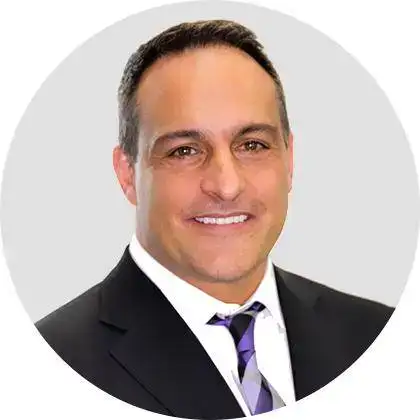Hair loss is a common concern that affects millions, impacting not just appearance but often self-confidence as well. While the market is flooded with topical solutions, medications, and traditional transplants, a newer, more natural approach is gaining significant attention: Nanofat Hair Restoration. This innovative procedure leverages your body’s own healing power to encourage hair growth. If you’re looking for a cutting-edge, minimally invasive option, this guide will walk you through everything you need to know.
Why Nano Fat Hair Restoration Is Gaining Attention
Hair loss affects both men and women, often starting earlier than expected. Traditional solutions like topical minoxidil or oral finasteride can slow down loss but don’t work for everyone. Hair transplants can provide dramatic results but involve surgery, recovery time, and higher costs. Nanofat hair restoration is appealing because it’s minimally invasive, uses your own tissue, and aims to restore scalp health rather than replacing follicles.
What Makes Nano Fat Different From a Hair Transplant
Nano fat is created by gently harvesting a small amount of fat, usually from the abdomen or flanks, and then processing it into a fine suspension. This “nanofat” no longer functions as fat but contains regenerative cells and growth factors. When injected into the scalp, it can stimulate better blood supply, strengthen miniaturized hair, and improve scalp quality. Unlike a transplant, nano fat doesn’t move hair follicles from one place to another. Instead, it creates a healthier environment for the hair you still have, making it stronger, thicker, and more resilient.
Is Nano Fat Right for Your Stage of Hair Thinning?
Nano fat hair restoration works best for people in the early to moderate stages of hair thinning, when the scalp still has active, though weaker, hair follicles. Both men and women with pattern hair loss may be candidates if they have enough donor fat for a small harvest and are otherwise healthy. It’s less helpful for areas that are completely smooth and bald, or for certain scarring alopecias where follicles are permanently damaged. If you’re using medications like minoxidil or finasteride, or devices like low‑level laser therapy, nano fat can be positioned as a complement rather than a replacement.
What Happens During a Nano Fat Session?
A nano fat hair restoration session is usually straightforward and done in the office under local anesthesia. It starts with a small amount of fat being gently taken from an area like the abdomen or flanks. That fat is then processed into a liquid form rich in regenerative cells. Once it’s ready, the solution is carefully injected into the thinning areas of your scalp using very fine needles. The whole process typically takes one to two hours, and most people head home the same day with only minor aftereffects such as scalp tenderness or mild bruising at the harvest site. Because it’s minimally invasive, you can usually get back to normal daily activities within a day or two.
What the First Few Days After Treatment Are Like
You’ll be glad to know the recovery process is generally quite minimal. It’s common to have some mild tenderness or a bit of swelling, both on the scalp and in the donor area, but this usually subsides within a few days. We’ll have you back to showering by the next morning. For the first 48 to 72 hours, we just ask that you avoid any heavy lifting or intense workouts and be mindful to protect the area from too much heat. In fact, most people are back to their normal work routine the very next day.
What Results Can You Realistically Expect?
It’s important to go into nano fat hair restoration with the right expectations. This isn’t a quick fix, it’s a regenerative treatment that takes time to show results. Most people start to notice early changes, like less shedding or the growth of fine “baby hairs,” within two to three months. More noticeable improvements in thickness and coverage usually develop gradually over six to twelve months.
The outcome is typically fuller, healthier-looking hair in thinning areas, not a brand-new hairline. It works best for those in the early to moderate stages of hair loss and can also enhance hair quality after procedures like a facelift. However, it’s not a cure for complete baldness.
Pairing Nano Fat With PRP, Medications, and More
Nano fat on its own can improve scalp health and strengthen existing hair, but results are often even better when it’s paired with other treatments. Many providers combine it with PRP injections, topical minoxidil, oral medications, or low-level laser therapy to enhance and sustain outcomes. This multi-layered approach addresses hair loss from different angles, supporting follicle health, boosting growth cycles, and slowing down further thinning. For people with active or ongoing hair loss, combining therapies usually offers more reliable and longer-lasting improvements than relying on a single treatment alone.
Is Nano Fat the Right Step in Your Hair Restoration Journey?
Nano fat Hair Treatment isn’t a magic cure, but it’s an innovative option for people in the early or moderate stages of thinning. Using your own tissue to improve scalp health offers a natural and low-downtime way to support fuller hair.
If you’re curious whether nano hair restoration is the right fit for you, the team at Seattle Plastic Surgery can help. We will guide you through your options and create a plan tailored to your needs. Don’t wait until thinning progresses further. Call (206-739-0355) or click here to schedule your consultation today and discover how nano fat therapy can help you achieve healthier, fuller-looking hair.

Dr. Jonov is a cosmetic surgeon who specializes in plastic surgeries of the face, breast, and body at Seattle Plastic Surgery.

